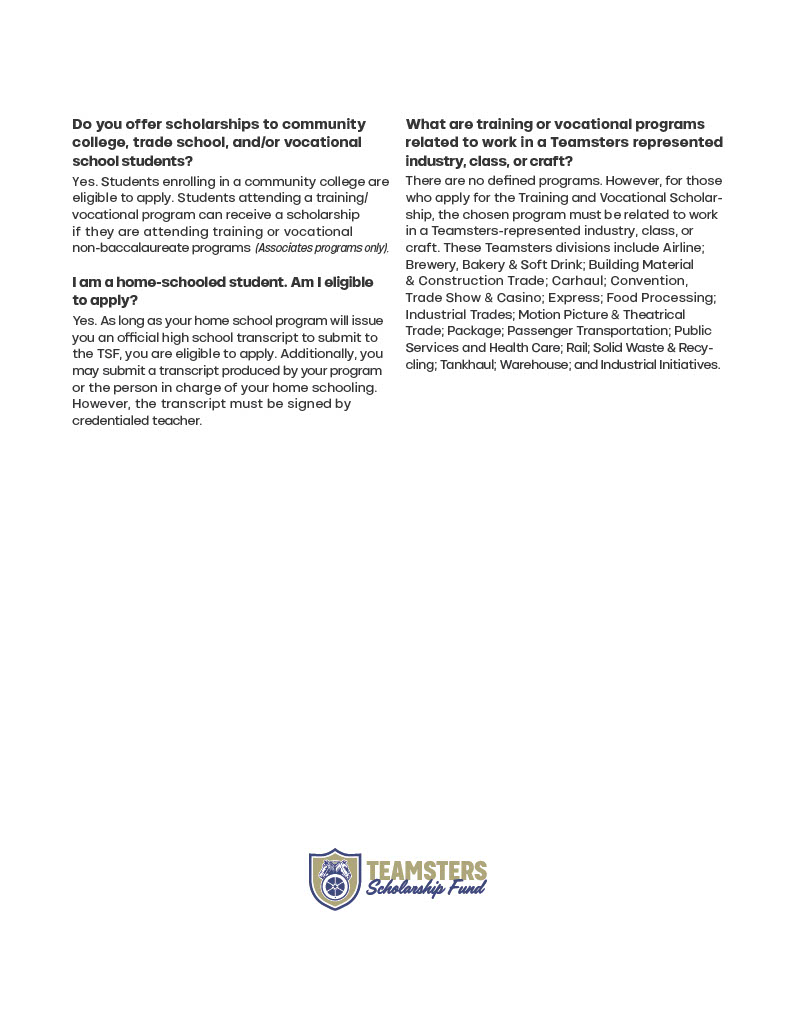
Nomination Notice




Teamsters Local 61 Scholarship

Teamsters Local 61 Scholarships are awarded each year to two (2) graduating seniors in the amount of $500 each.
Applications are now open and the deadline to apply and send all required materials is April 30, 2026.
Please see the application below or contact our office if you would prefer one be mailed to your home.
Good luck to you all!




The Teamsters Scholarship

The Teamsters Scholarship Fund is proud to announce its applications are open for graduating seniors, class of 2026!
For the 2026 graduating class, applications will be available online November 1, 2025, with an application deadline of April 1, 2026.
(Program Key: TSF)
Deadline is April 1, 2026
CLICK HERE TO APPLY https://aim.applyists.net/Account/LogOn?ReturnUrl=%2fTSF




The James R. Hoffa Memorial Scholarship

ATTENTION SENIORS, CLASS OF 2026!
The application process for scholarships from the James R. Hoffa Memorial Scholarship Fund is now open.
Direct Link to Apply: https://aim.applyists.net/JRHMSF/
Program Key: JRHMSF
The deadline for application completion is March 2, 2026.
Academic scholarships ranging from $1,000 to $10,000 and Vocational/Training program scholarships ranging from $500 to $2,000 are available to High School seniors who are the sons/daughters/financial dependents of Teamster members (including members of the BLET, BMWED, TCRC, TCRC-BMW). In 2025, the Fund awarded $1.2 million in scholarships to Teamster children across the U.S. and Canada.
The James R. Hoffa Memorial Scholarship Fund www.jrhmsf.org


Notice of Local Union Election Plan

61 UNITED SLATE RE-ELECTED
- Labor Day 2025
- UPS Asheville Retirement Ceremony
- Saturday, May 10, 2025
- Cancellation Notice, 1.11.25
- Labor Day 2024
- AT&T Workers on Strike Across the Southeast
- OSHA Heat Illness Prevention Campaign
- Teamsters Demand Congress Pass Warehouse Worker Protection Act Following Prime Day Safety Report
- UPS Organizing
- Teamsters Strike at Molson Coors
Subcategories

Stay In the Know
If you'd like to keep up with what's happening here at Local 61, we encourage you to sign up for our newsletter. You do not have to be a member to receive the newsletter.

